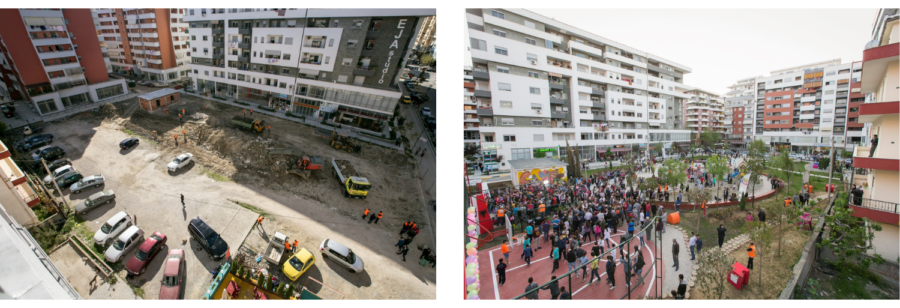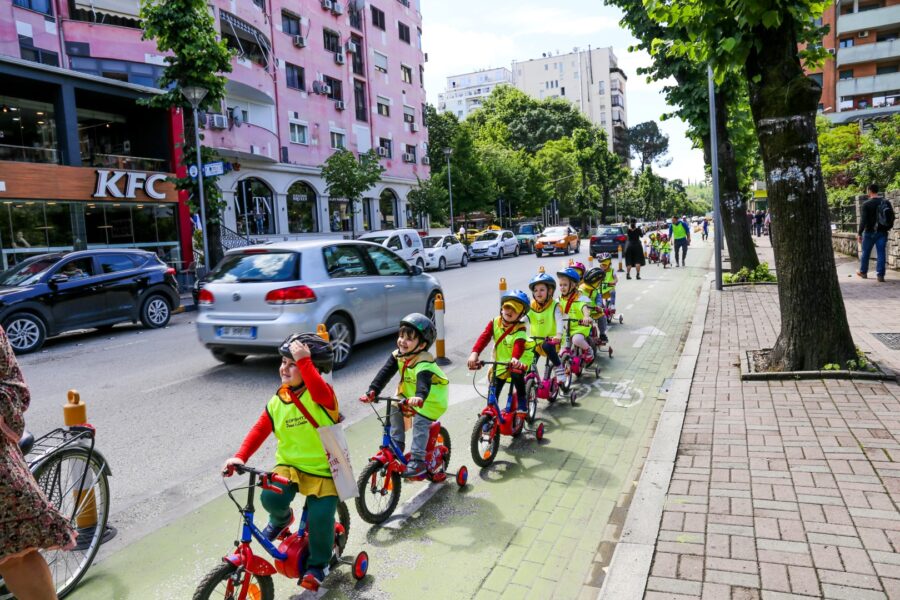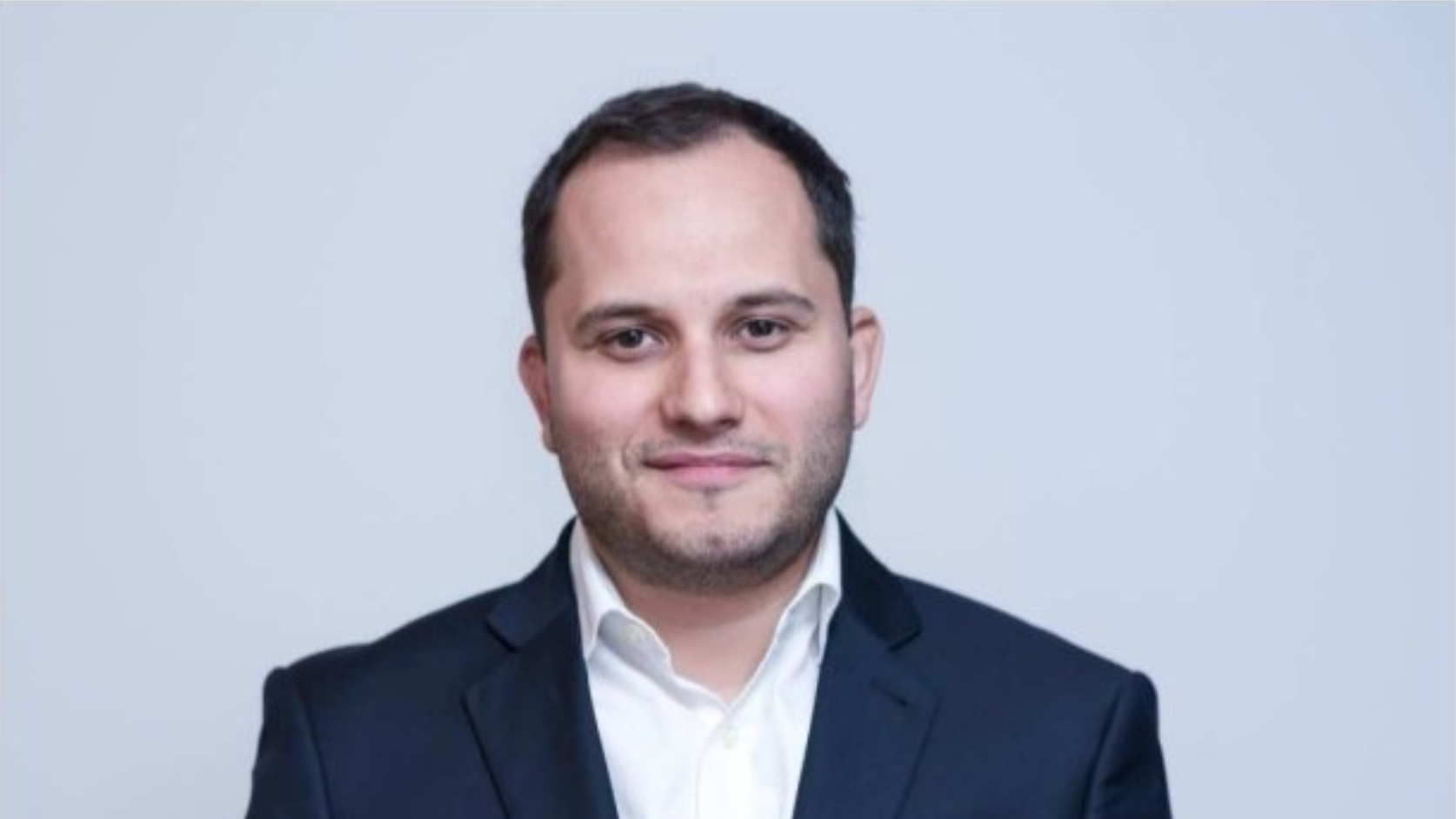13 min read.
Joni Baboci is an architect, urban planner, and senior advisor for the Municipality of Tirana. He is the municipality’s former general director of urban planning and redevelopment, where he lead a team of 100+ architects, planners and engineers.
Tirana has undergone rapid population growth and is currently engaged in an ambitious densification initiative – Tirana 2030. Can you expand upon this project briefly, and explain how active mobility fits within this broader strategy ?
Tirana for the last 30 years has grown by more than four fold. It used to be a city of 200,000. We are now formally 800,000 people although in truth we are closer to 1 million. Almost a third of the whole population of Albania lives in Tirana, so the densification project actually is a direct response to what has happened and what is still happening in the city. A lot of Albanias want to go abroad but their plan B is Tirana. Tirana is the place where they can envision their dreams and they can try to build a better life. A lot of students come here every year and then they chose to stay, they chose to try to build a career and a family in the boundaries of the city.
Tirana 2030 is a very different approach to planning where we are trying to create the right context that absorbs change. This change happens in different neighbourhoods of the city that have different typologies, but essentially the concept is to try to limit growth outwards and densify whatever is already built. We try to capitalise and finance projects such as bike lanes, and other green initiatives in terms of mobility to make sure that the people that are now living closer to each other are getting all benefits from living in the city while at the same time tackling the issues of pollution, the time in traffic, and so on. One of our main approaches has been to shift the mentality from a car-centric one to a bike and pedestrian one. Keep in mind that Tirana in 1990, when we were 200,000, only had 200 cars, 178 to be exact. Only official cars were allowed to circulate in the city but by trying to imitate the West in the decades that followed we now have a thousand times. What I’m trying to say is that we have had the culture of active mobility here before. Before the 1990s, when people couldn’t own a car, they walked, they cycled or they took public transportation because there weren’t other options. It wasn’t even the perspective of citizens of Tirana to drive a car because it was impossible. It’s up to us to help people shift towards those alternative, active ways of mobility once again.
Tirana’s mayor Erion Veliaj has structured his vision for urban change around children. How do you make sure this child and family centric vision gets translated to the built environment, from public spaces to transportation for example?
I think it’s interesting because as technical advisors or implementors to the mayor it should have been us that came up with this brilliant idea but in fact it worked the other way around. We are focused in densifying the typical things that urban planners think of in many cities around the world but the children centric aspect was introduced by the mayor who tried to translate it into different fields of his work. It was one of the key factors in pushing recycling and the ban of plastic bags, by training children to act as revolutionaries in the household to look after their parents saying “you are doing this wrong, you should do this”.Children are an important part of decision-making process. In most of Eastern Europe politicians and politics are not something people aspire to, it’s something that unfortunately most people don’t think as positive, so the challenge is to change that because if the best people are not aspiring to be leaders in your city or your country, then of course we won’t have the best leadership 10 years down the line. I think one of his approaches since the beginning was: can we get very young people in the city hall and tell them we are not as horrible as some people might portray us and at the same time look at the huge potential to change things and to be an actor in very proactively influencing the lives of citizens.
Secondly, all these children coming into city hall, they are really open minded. They have new ideas and they don’t mind at all going around and throwing away something that wouldn’t be typical for city employees. In a way, it is very inspiring to us and to the Mayor to think outside the box and sparking that idea in our head. Making them part of that process is really important. We are not alone in this. We have a fantastic NGO called Qendra Marrëdhënie (Relationship Center) led by a Harvard graduate Simon Battisti who is leading this amazing project about changing the way our city works around schools and mobility focused around children. We have a lot of partners that have helped us and become part of this vision. We try to have as many conversations with children and families to actually understand what is going on in neighbourhoods. We try to be as local as possible when thinking about these projects. We now understand that we don’t know most things and they know much better than us what kind of city space or playground they need in their neighbourhoods. The biggest and the hardest thing to do is going out there and listening, to take those lessons and apply them through co-design, having them play an active part in this conversation to the city. Even though it sounds simple it is about changing the way a lot of people at city hall are thinking.
Tirana has a Chief Child Officer, can you speak a bit about this role?
The idea was how to make sure that the vision of the mayor is translated into all the different silos of city hall, to make sure that this priority which is very singular in nature can actually become part of our agenda in a more holistic way. The Chief Child Officer coordinates projects which have children at their core. A city that is designed for children is a city that is great for everyone, so we are checking all the boxes if we tick the child friendly box. It’s a Chief Child Officer but it’s actually improving the living conditions for all citizens across Tirana by making sure that all city departments that hear about this idea from the Mayor are also following up on specific projects and making sure that they are coordinated and have this into their daily agendas.

How does facilitating cycling specifically support this desire to place the needs of the city’s youngest citizens at its forefront?
The first thing is that children can’t take public transportation by themselves most of the time and to a certain age, and of course they can’t drive so the only way to move around independently is to either walk or bike. Therefore just by making sure that we have the right infrastructure in place and making parents think “you know, is not a bad idea to give them a bike” and enabling them to move arounds safely already helps a lot. The routine that caregivers have is very different than people who don’t take care for children. It is usually much more diverse, and more localised, it happens within a neighbourhood. In the last few years we have been trying to think about how we can make sure the areas around our schools, which are the epicentre for the children’s lives, are friendlier urban environments. This means making sure children and caregivers are safe when they’re crossing the street, making sure that they have space for people to park their bikes, to drop off their children, making sure we integrate all the different mobilities and generally keeping in mind that this is primarily a street or road for children. From 8 – 10am and 3 – 5pm it has to be totally focused on their wellbeing. We’re trying to take an acupuncture approach for projects throughout the city.
Of course it also goes beyond and outside the scope of planning and urban design. We are trying to educate children at schools, every weekend we have groups of children that work with our parks and recreation agency and they go biking so that it becomes part of their culture. The key not to just focus on the built environment but also on the cultural aspect. Our mayor likes to say that the most important infrastructure project is 10 cm long and is the space between the ears. This is what we are trying to address, we are trying to make sure that the children of today are the responsible adults of tomorrow even if they don’t bike.
Caregivers and young children navigate the city in different ways than most other demographics, and have specific needs as street users. How has the city worked to understand these needs and gather data about their mobility patterns?
We have had a number of strategies. One of them is trying to gather citywide data and score neighbourhoods in terms of what’s the average of all the different indicators which always helps. However this doesn’t really help address the key issue which is that this isn’t about a general design, it is a very place-based, very localised way of approaching it such as with the school project I mentioned. We have another interesting program where if you have a public parking space in front of your bar or your home you can apply to get a free bike parking spot and the city will pay for it and you don’t get car parking in front of your business anymore. This is nice for the business because there is more light and space in front of it, and it is nice for the people who want to frequent it because they can park their bikes.
The key lesson that we have learned and we don’t apply as often as we need that at the end of the day it is a very complex issue and it can’t be dealt through general citywide data. Data is very important but needs to be merged with the local context, local knowledge, the specific street you are designing for, the specific needs of the neighbourhoods. I think that’s one of the key aspects of our plan is to be as flexible and as fragmented as possible.
I think the objective of our bike strategy is that we don’t want to design something that is there forever, we want to design something that is there for the next couple of years. We expect it to change so by expecting change, we design what is right for now and not being married to these grand ideas. I think the key aspect is to acknowledge the limitations of what you are trying to achieve, so of course at the end of the day people will still drive tomorrow, we won’t stop that. We have been trying to discourage it very actively. That has brought a lot of reaction from this very loud minority of drivers who are usually richer, who have more access in media, who have more followers on social media, but who don’t represent the truth which is that 80% of the people in Tirana don’t commute by car.
From your perspective, what are some opportunities for greater wellbeing of young children and their caregivers that can be unlocked by cycling?
These benefits are well documented, whether it is the quality of air, quality of life, health, people in our field know this. It is not about proving it, it is about communicating it, and making people understand that this is factual truth.
One thing that has happened with COVID-19 has been the opportunity to accelerate the future. Things have fast forwarded, for example with the move to more telecommuting or the rapid implementation of bike lanes. Our main challenge beginning next spring will be to capitalise on this when we’ve beaten the disease. We measured the air in Tirana during and after the lockdown, so we now have the data and the numbers and we have to make sure that we have to communicate well enough so it allows us to make permanent the temporary projects that we implemented during the last six months. As officials in the city hall, I think that our duty is to conduct research, but analysing it and sitting down with people, going through the process together. This is not something that some technical people think is the best, it’s something to do together with the people, and make them understand that this is beneficial for their business, their health, the health of their children, and so on.

What still needs to be done, from either a design or policy perspective, to remove barriers to cycling for young children and caregivers?
That’s a difficult question to answer. I have a 3 year old, and I would not risk her riding in some of the urban streets in Tirana even if there is a physically separated lane. Even if it is good infrastructure, some of these things take time and we have to also acknowledge that. What we can do, however, is educate my daughter and the children of Tirana to prepare for that moment so the next generation of 3 year olds feel safer than today. It’s a matter of balancing the communication of grand visions while making sure we have feet on the ground and are being real about what we can achieve as well as also thinking a bit longer term. We have to think pragmatically how we can increase the cycling modal share as much as possible and think about what changes we can make beyond the infrastructure. If you go to a primary school and you have a weekly with the kids and the physical education classes are not about running but are also about biking and how to respect other people who are biking, I think that goes a long way towards improving and removing those barriers in the future. You can have very safe streets but you don’t necessarily feel safe for children to ride on and that shows a needed change in our street culture. In Copenhagen for example there is this fantastic small bike playground where kids can learn how to bike and learn the rules of the road. We try to emulate that for example whenever we have car free days, we have pop-up playgrounds where we have some small cars, small traffic lights, and kids trying to learn the rules of the road, and having that experience changes how they’d behave.
Any future initiatives from the city of Tirana to facilitate active transportation for young children and their caregivers or last comments you would like to make.
One interesting new initiative is the “one hundred neighbourhoods” project. It starts from the idea of neighbourhood schools and the 15minute city which is now very popular after it went global with Paris. We don’t expect caregivers to work within that radius, or parents, we expect them to have 80% of their needs served, you know, the small grocer, the guy who fixes your bike, some of those small services which in Tirana are still very widespread. Our society has not been commoditised to the point of having chain supermarkets everywhere, we have small scale services such as cell phone repair shops, bike repair shops, and local grocers, and I think that has made it easier for us to start implementing this vision. Investing in localised infrastructure has also helped that come to life, such as removing the friction that cars centric streets can give to caregivers. So we are trying to focus our efforts on 100 small neighbourhoods, and it’s’ not just about small children but a little bit of everything, such as co-investing with the citizens, infrastructure, developing new playgrounds, but also how we can enable a sense of community in some of the newer neighbourhoods in Tirana and how we can rebuild those connections that have been really changed under the stress of two decades of growth.
Access our Report on Cycling Cities for Infants, Toddlers & Caregivers
